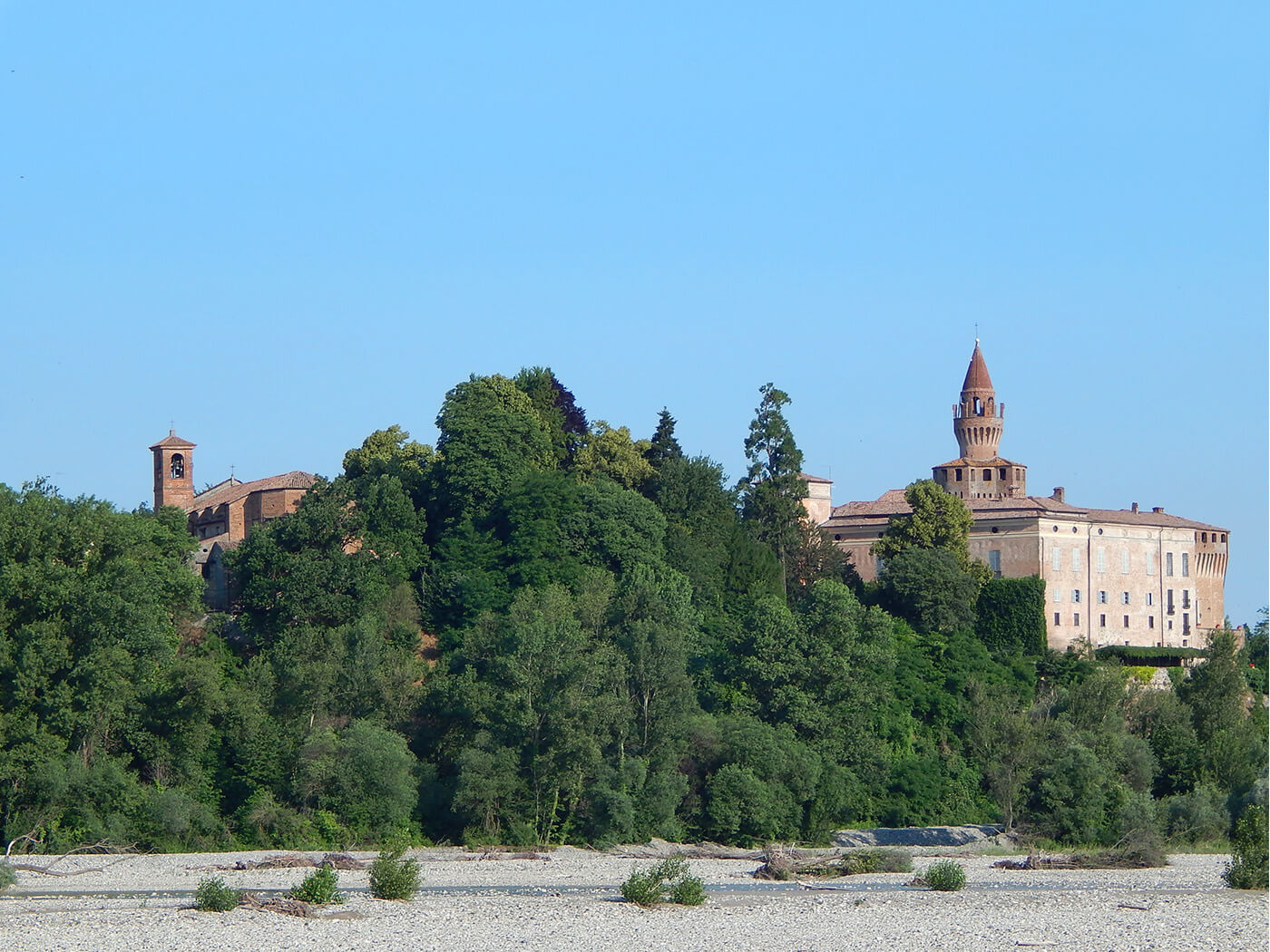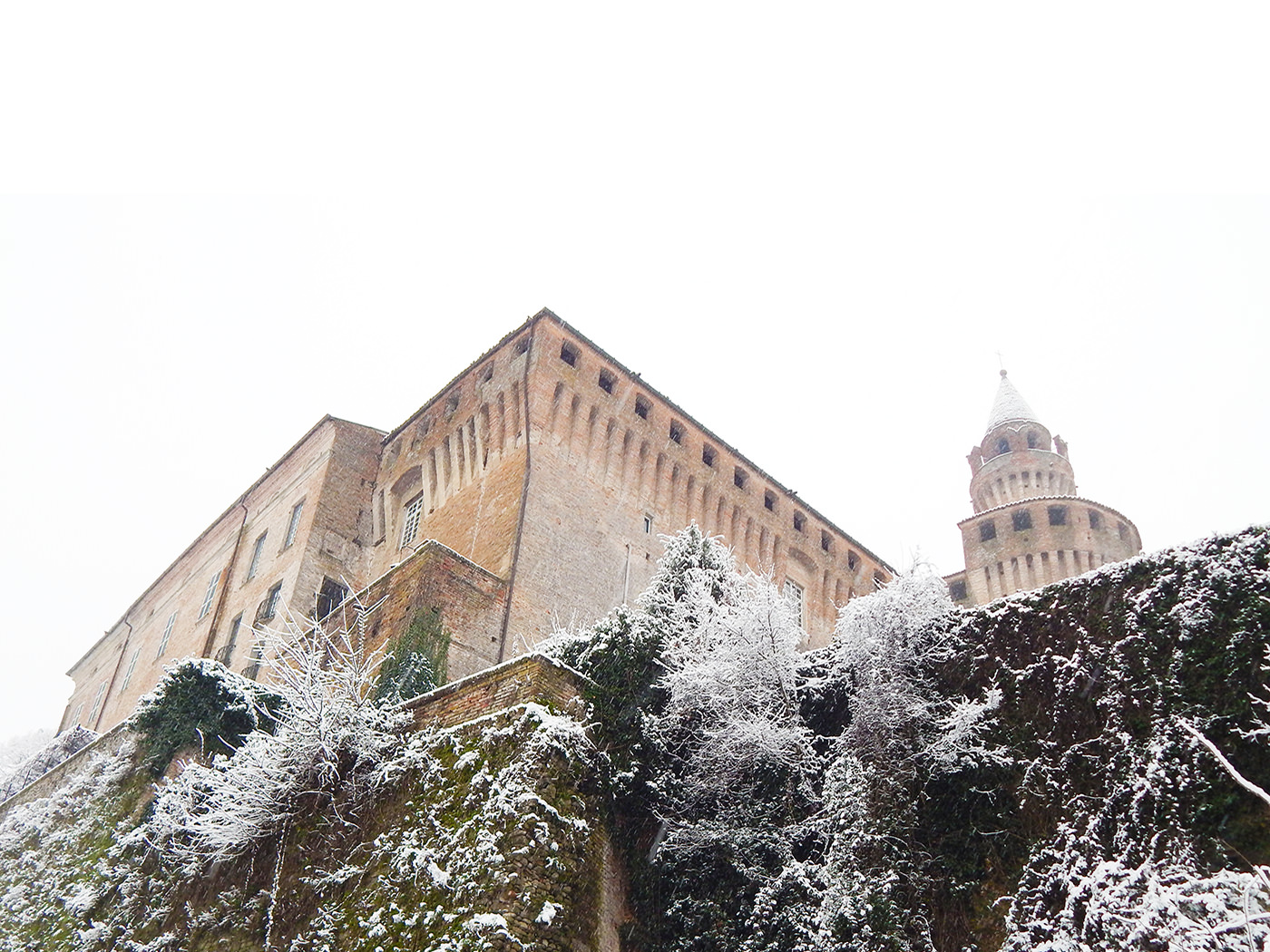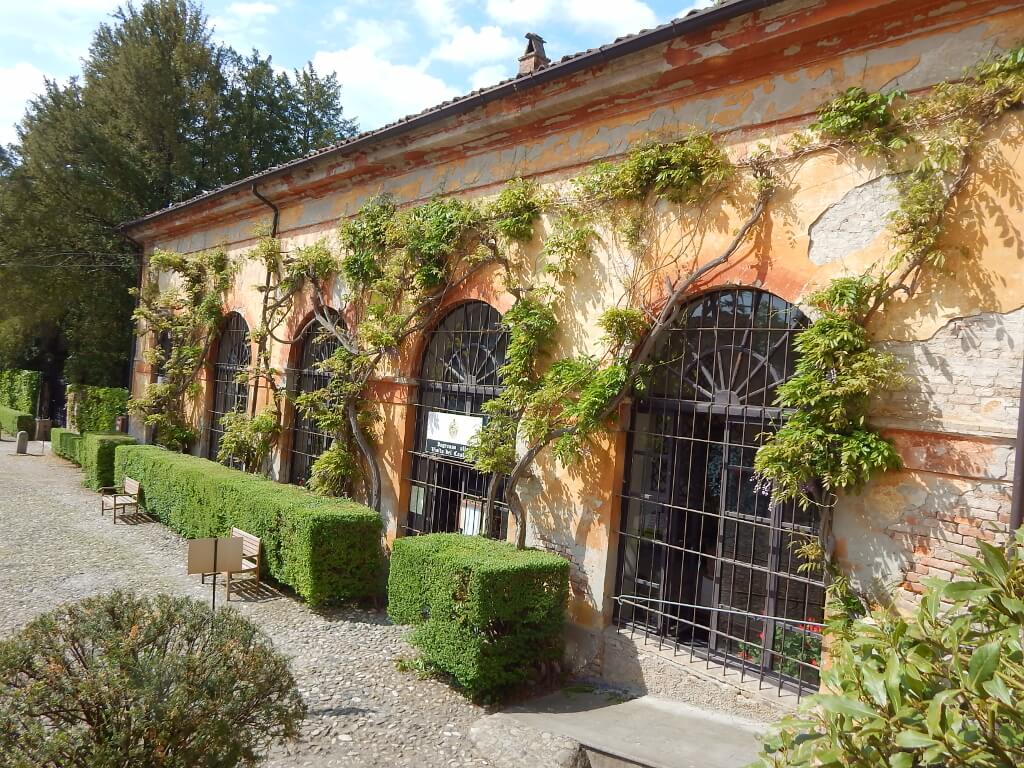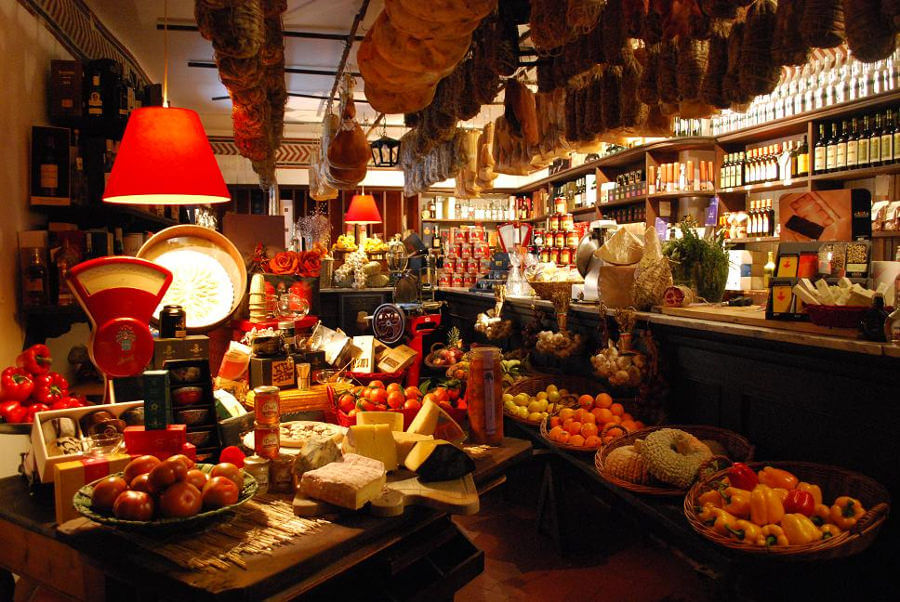
Not far from Piacenza, the small Village of Rivalta preserves the original architecture of private homes, taverns, restaurants, shops and medieval religious structures.
The Counts Zanardi Landi, descendents of the fourteenth century feudal family, still live today the sumptuous elegant residence, surrounded by the magnificent eighteenth-century park, with ancient trees and english garden.
Inside the castle can be visited most of the more than fifty rooms with antiques furnishings, including the Armory Room dedicated to the Battle of Lepanto, the museums of sacred art, of explorations and of military costume.
History
Ripa Alta
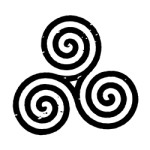
Inhabited since ancient times, the territory around Rivalta was occupied by Ligures, Etruscans and Celts.
Not numerous enough to resist the invasion of Romans, these were underwent a slow but inexorable colonization, since the founding of the first colony in northern Italy “Placentia”, at only 16 km.
In particular the area of the river, characterized by the large river bed, marshy plains and forests of the Apennines, was the scene in 218 BC of “Battle of the Trebbia”, in the Second Punic War.*
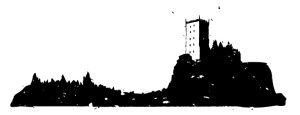
The marshland was later reclaimed and had a strategic importance in later centuries for military expeditions and businesses between the Po Valley and the Sea of Genoa. For this at the entrance of Trebbia Valley, was erected a guard tower on the highest bank of the river, by definition of which, “Ripa Alta”, the village takes its name.
* In memory of the event was recently placed at the “Bridge of Tuna” the statue of an elephant of the Carthaginian war.
High Middle Ages
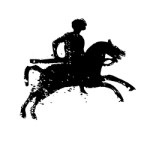
With the fall of Roman Empire the fortress becomes first dominion of the Longobards, then the Franks.*
The barbaric invasions forced the fortification, with the massive square donjon, the walls, the entrance arch and the moat, and thanks to that Rivalta became one of the most important military bastions of Western Emilia.
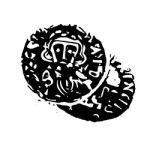
Meanwhile locals abandoned their crops and became artisans, loggers, hunters, fishermen, herders of sheep and wild pigs in the local woods, increasingly vast and abundant. There were those who received tolls by ferrying people, animals and materials from one bank of the river to the other, with varying rates depending on the time and conditions of the weather (at night or with high water prices doubled). Still others had the task of guarding the surroundings from the top of small towers called “Chimneys”.**
* To confirm this, the village church dedicated to St. Martin Bishop, revered by both peoples.
** The name comes from the central fireplace used to communicate the presence of dangers through smoke signals.
Guelphs and Ghibellines
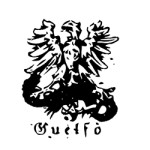
In early 1000 the complex of Rivalta was donated to Benedictines of San Savino’s monastery in Piacenza by Emperor of Germany, who was fighting with the feudal lords to extend his dominance in Italy.
The abbot of the monastery (Landi di Cerreto) granted the cultivation of feud to local “de Ripalta”family, that later took possession.
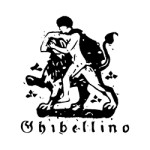
Among sieges and changes in ownership, also Rivalta was involved in fight between Guelphs, loyal to the papacy, and Ghibellines, loyal to the emperor; in fact, in Rivalta as elsewhere in Italy, under the cover of the division between Guelphs and Ghibellines they faced for divisions and clashes of interest.
So in 1255 the ghibelline Oberto Pallavicino, imperial vicar in Piacenza, ordered the destruction of a number of forts of Guelph party including Rivalta.
The Landi
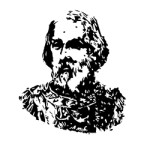
In early 1300 the nobleman Obizzo (o Opizzone) Landi bought the castle ruins from local family “de Ripalta”; in the reconstruction of the structure further strengthened, determined as he was to conquer the nearby Piacenza, taking it away from the Galeazzo Visconti friend’s domain, Duke of Milan and supporter of the Emperor. *
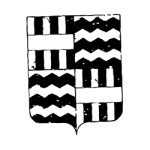
The reaction, however, was stronger than expected and led to three months of siege to the Castle and Obizzo escape, forced to seek help from the papal troops, interest in increasing the Guelph domination of the Piacenza town.The move proves successful and led to the final defeat of the Visconti and to affirmation of the Landi family.
The descendants of Obizzo made their fortunes with merchant and banking activities of international level, increased their power by buying land and property to obtain the degree of “sovereign princes” of “Landi State”,
recognized by the Holy Roman Empire. **
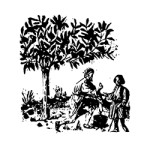
Since the middle of 1400 the Castle was transformed into a mansion. For their faithfulness to the dynasty of the Duchy of Milan, returned to rule Piacenza, the Landis were appointed Conti and obtained permission to keep a commercial market in the village, which attracted trade and Jews money changers, for the benefit of the local population. Rivalta became in this way Capital of Municipality.
* In memory of Obizzo, still in the ‘900 the fortified tower at the entrance of the village is the “Opizzone Tower”.
** For nearly four centuries the family Landi ruled the Ligurian-Emilian Apennines territories, until the disposal of the Farnese Duchy of Parma and Piacenza, with whom they had frequent trade.
Duchy
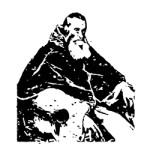
In the mid-1500s Pope Paul III Farnese occupied the territory south of the Po creating the
Duchy of Parma and Piacenza for his son Pier Luigi. The confiscation of land and wealth to the detriment of the local lords enormously increased the power of his family and when at the end of 1600 became extinct princely branch Landi, also the Rivalta possessions suffered the same fate, the heirs were even deprived of the right to control the waters of the Trebbia and isolated in the small Marquis of Gambaro in Val Nure.
All this has an impact on the population of the village that suffered pillages, sieges and devastations for the following centuries.
In 1600 it was besieged by six thousand Spanish soldiers under the war between France and Spain.
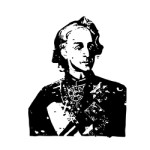
In 1700, with the “Battle of Piacenza” it was sacked by the Austrian victors over the French and Spanish for the conquest of Duchy by the Empress Maria Theresa of Austria.
At the end of the same century, during the anti Napoleonic campaign led by Russian General Suvorov, it took place near the river the “Battle of the Trebbia”, where 66,000 men between the French and Russians were faced hard causing serious damage and devastation to the village and the castle. *
* Despite the victory, contrasts and indecision inside the anti-French coalition favored the return to Italy of Napoleon, who in 1815 gave the Duchy to his wife, Marie Louise of Austria, the “most loved Duchess by the people” for her philanthropic work to the benefit of poorest segments, until his death in 1847.
Municipality
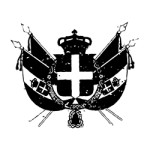
In 1800, also became extinct the branch of the last Landi of Rivalta and the castle passed to the Landi closest family relatives; the Unification of Italy plebiscite decided the end of the Duchy and the annexation to the emerging Kingdom of Sardinia.*
This caused the loss of many activities and a consequent social and economic decline, but the development of the internal market at the Village allows the survival of the “Rivalta Municipality.”
After all at the end of the century the town hall was moved to the nearby Gazzola, a small agricultural village a few kilometers away, with the establishment of the “Gazzola Municipality”.
* The nearby town of Piacenza, which in 1848 had been the first to vote for the annexation to the Savoy state, deserved for this the title of “Eldest daughter of the Kingdom of Italy”.

..sulla riva più alta del fiume, dalla cui definizione -“Ripa Alta”- il borgo prende il nome
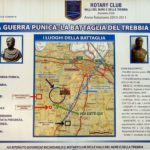
L'area del fiume, caratterizzata dall'ampio greto, dai pianori acquitrinosi e dai boschi del primo Appennino, fu teatro nel 218 a.C. della famosa Battaglia della Trebbia, nella Seconda Guerra Punica

L'elefante da guerra cartaginese al ponte di Tuna
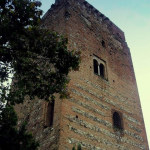
All'imbocco della Val Trebbia venne eretta una torre di guardia, il Dongione, di importanza strategica per le spedizioni militari ed i commerci tra la Pianura Padana e il mare di Genova
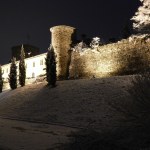
Dongione, torre Sud di avvistamento e cinta muraria, dell'epoca
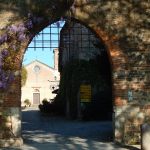
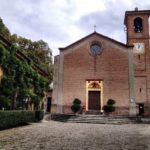
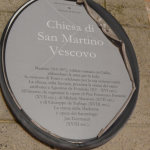
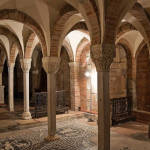
Nei primi anni del 1000 il complesso di Rivalta fu donato ai Benedettini del monastero San Savino di Piacenza dall’imperatore di Germania, che era in lotta con i signori feudali per estendere il proprio dominio in Italia. Nella foto i mosaici della cripta nella Basilica S.Savino
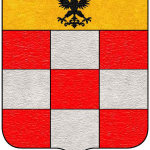
Nel 1255 il ghibellino Oberto Pallavicino, vicario imperiale a Piacenza, ordinò la distruzione di una serie di fortilizi di parte Guelfa tra cui Rivalta (Stemma Famiglia Pallavicino)
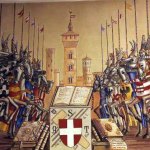
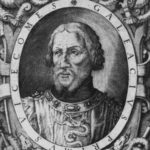
Agli inizi del 1300 il nobiluomo Obizzo Landi comprò le rovine del Castello dalla locale famiglia “de Ripalta”; nella ricostruzione fortificò la struttura, intenzionato a conquistare la vicina Piacenza, sottraendola al dominio dell’amico Galeazzo Visconti (nell'immagine) Duca di Milano e sostenitore dell’Imperatore
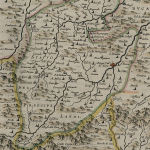
I discendenti di Obizzo fecero fortuna con attività mercantili e bancarie di livello internazionale, aumentarono il loro potere acquistando terreni e proprietà fino ad ottenere il grado di principi dello Stato dei feudi imperiali Landi (mappa di Ioannis Blaeu,1662).La famiglia piacentina Landi resse questi territori dal 1257 al 1682
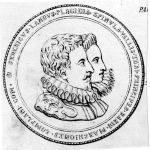
Moneta battuta dalla zecca dello Stato Landi ai tempi di Federico II e consorte Placidia Spinola, 1599
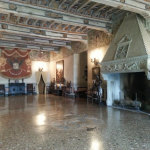
(castellorivalta.blogspot.it)
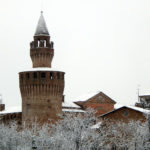
Dalla metà del 1400 la Rocca venne trasformata in una residenza signorile. Per la loro fedeltà alla dinastia del Ducato di Milano, tornata a governare Piacenza, i Landi furono nominati Conti e ottennero il permesso di tenere un mercato commerciale all’interno del borgo, che attirò traffici e cambia valute ebrei, a beneficio della popolazione locale. Rivalta diventò in questo modo Capoluogo di Comune
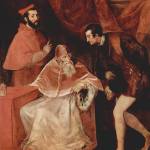
Papa Paolo III con i nipoti Alessandro e Ottavio Farnese (opera di Tiziano), creò il Ducato di Parma e Piacenza per il figlio Pier Luigi
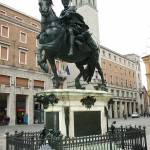
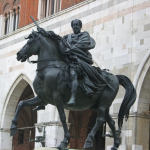
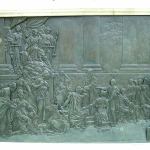
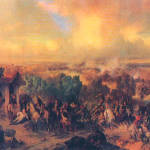
Durante la campagna antinapoleonica guidata dal generale russo Suvorov, si svolse nelle vicinanze del fiume la “Battaglia della Trebbia”, in cui 66.000 uomini tra Francesi e Russi si fronteggiarono duramente arrecando seri danni e devastazioni al borgo e al castello (La Battaglia della Trebbia 1799, opera di Alexander Kotzebue)
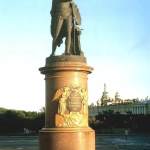
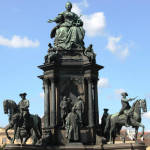
Nel 1700 la “Battaglia di Piacenza”. Rivalta fu saccheggiata dagli austriaci vittoriosi sui francesi e spagnoli per la conquista del Ducato da parte dell’Imperatrice Maria Teresa d’Austria (Imperatrice Maria Teresa d'Austria - Vienna)
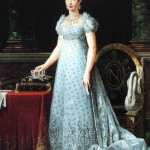
Nel 1815 Napoleone affidò il Ducato alla moglie Maria Luigia d’Austria, la “Duchessa più amata dal popolo” per le sue opere filantropiche a beneficio delle fasce meno abbienti, fino alla sua morte nel 1847 (Maria Luigia Imperatrice, opera di R. J. Levèfre, Museo Lombardi - Parma)
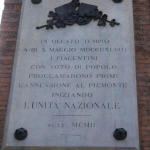
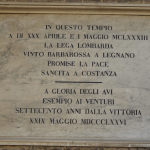
Ghosts
Pietro Zanardi Landi
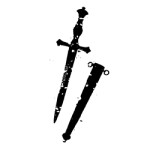
Between history and legend, the Rivalta’s Castle has its “strange tenants.”
Most famous ghost is that of Obizzo Landi’s son in law: Pietro Zanardi Landi.
Obizzo and his wife Bianchina had three children, one male and two females.
At the death of the overlord, when the only son was killed in an ambush, the Castle passed to the sisters and their husbands, Pietro Zanardi Landi and Galvano Landi, who fought long the heredity, until the killing of Pietro, and the victory of Galvano.
Since then the spirit of Pietro would have wandered in the castle, by persecuting guests and the descendent of Galvano until the late nineteenth century, when the property was assigned to another branch of the family, that of Zanardi Landi precisely.
Finally reestablished justice, Pietro disappeared; in 1970 however, when the heirs of Zanardi Landi family took an unsuspecting host descendent of Galvano, he appeared one last time by disturbying sleep.
Chef Giuseppe

Giuseppe, family’s chef in 1700, was killed in revenge from butler, who had harassed his wife. Its fame is mainly due to an evening in the eighties of ‘900, in which the castle was the guest Princess Margaret of England (younger sister of Queen Elizabeth); it would in fact enjoyed turning off and on appliances, moving objects and paintings, especially in the castle where there is the old kitchen.
Even today when it is very busy, the chef Giuseppe, occurs again in a funny and playful way.
Bianchina
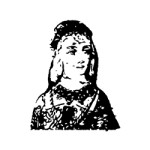
Legend has it that Bianchina, the lovely wife of Obizzo Landi, Rivalta lord in the fourteenth century, is linked to the events on the border between reality and invention.
It is said that she was persistently courted by the Duke of Milan and a friend of Obizzo, Galeazzo Visconti, and were precisely these advances to spoil the relationship between the Duke and the feudal lord, later archenemies.
On this subject and on the figure of Bianchina in the nineteenth century Luigi Marzolini wrote a real novel called: “Bianchina Landi; that is, the Expulsion of Galeazzo Visconti from Piacenza. Historical tale of the fourteenth century.” At the beginning of the novel the author describes Rivalta based on his direct observations, it is therefore testimony environment of almost two centuries ago.
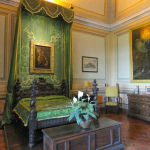
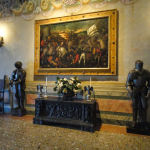
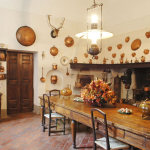
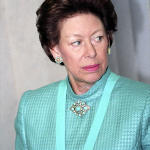
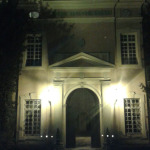
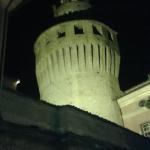
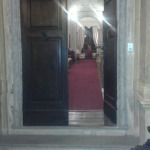
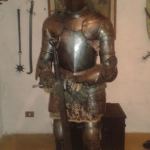
Sala delle Armi
Tourism
Walls
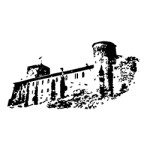
The visit to the Rivalta’s Village can only start from the outermost part of the complex, with the Oratory of the Madonna del Ponte, the perimeter walls, the entrance arch and the watchtowers.
Coming from the car park on the main road thus you can admire the curious octagonal chapel, built near the old drawbridge, the walls with South Tower and the entrance Donjon dedicated to Obizzo Landi.
This in particular is the oldest part of the whole Village and looks like a square tower of 36 meters in bricks and pebbles, which originally served as an observation point and ultimate refuge in case of siege. *
From here crossing the only door of the Village you can go into the interior and visit the streets of the hamlet.
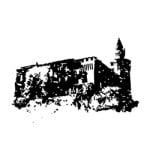
Otherwise going down a small path on the left, marked by a small sign of the Trebbia River Park, you can go into the moat of the Castle, up to the wide bed of the river, which offers the most spectacular view of the Rivalta’s Castle, with the unmistakable torresino, the embankment and the terraces of noble residence.**
* Well visible still today signs of artillery fire, suffered in numerous attacks.
** Essential to the descent of the path appropriate shoes and clothing.
Village
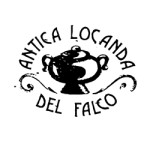
Crossed the entrance Village you can enjoy a magnificent view on the first of the two main pavements. *
Going along, on the left there is first the temporary seat of the Wax Museum, then the Park entrance and of the noble residence, lastly Castle box office and the facade of San Martino Church.
On the same street, on the right, to signal the famous restaurant “Antica Locanda del Falco”, that besides offering typical dishes of tradition from Piacenza, markets a wide selection of local products.
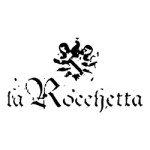
The other main street instead leads to the beautiful small square “of Stables”, following it you meet in order: shop of wines and local products “Re di Coppe”**, the characteristic Caffè di Rivalta, the exclusive Hotel “Residenza Torre di San Martino”, and the renowned restaurant “La Rocchetta”.***
In secondary streets of the Village then you will find various shops and craft studios, and of course private homes of residents.
* Due to the fragility of the cobblestones and the narrowness of the streets, the access is completely closed to traffic; However, you can park cars and buses in the two comfortable outdoor parking, free unguarded.
** Derived inside the tower said “dell’Opizzone”, the ancient Donjon of the Village.
*** Among the beautiful historic spaces that host it, of great interest is the fifteenth-century hall of the “Scuderia Rurale”, in which in the past were sheltered the animals used in the cultivation of the feud.
Castle
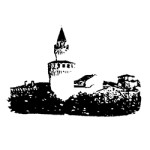
The Rivalta’s Castle, besides being the most important building and characteristic of the Village, it is one of the major monuments of Piacenza; real highlight of the province for architectural originality, historical importance and location, it is also distinguished by the rich program of events and organized routes.
The guided tour starts from the ticket office * alongside the church square, and includes:
- the park and the eighteenth-century façade of the residence
- the arcaded courtyard with the staircase and the gallery
- the main hall, the dining room and bedrooms
- Art gallery and the billiard room
- the kitchens, the cellar and the prisons
Lastly the discovery of the castle is not complete without museums dedicated to the Battle of Lepanto, to the military costume, to the holy art and to the explorations, without forgetting the ascent to the famous “Torresino”, the true symbol of Rivalta, inextricably linked to gloomy rumors and the figure of the famous architect son of Pietro Antonio Solari Guiniforte.**
* For any information concerning the opening days, the visiting hours, the tariffs and discounts applied, please refer to the official website of the castle or the answer phone number provided.
** They said that the hollow interior of the tower, still bristling with metal spikes, was a death trap for unsuspecting enemies of the prince, attracted the highest point of the castle with an apology and then pushed down without the possibility of salvation. The design of the structure would be attributed to Pietro Antonio Solari, known in Russia as Pyotr Antonin Frjazin because called by the Tsar to build defensive towers of the Kremlin, died in Moscow in 1493.
San Martino Church
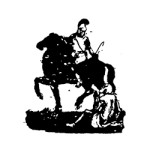
The Church of the Village is dedicated to Martino from Tours.*
Lived in Pannonia, Italy and Gallia in the fourth century, the Saint was particularly venerated by the Longobards and Frankish, to which it must be probably the diffusion of cult in area of Rivalta in the seventh and eighth centuries and the building of the parish, around the year 1000. It also confirms the location in a fortified place, suitable to host and defend the church against assaults also armed.
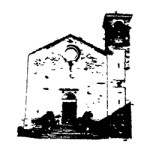
Destroyed and rebuilt many times, it has maintained over the centuries an understated elegance and a cozy atmosphere, thanks to the simplicity of the volumes and the scarcity of light sources.
The two pairs of chapels by Giuseppe Turbini at the sides and the “Madonna con bambino” by the Flemish Jan Herman Geernaerth, are a single decorative grant to the essentiality of the aisle. As for the visit, it is possible on public holidays, before and after the eucharistic celebrations.
* Note on the entrance portal of the sixteenth terracotta bust, depicting the Holy Bishop of Tours in liturgical vestments, and the bas-relief on the facade of the rectory, with the famous scene of the coat cut.
Wax Museum
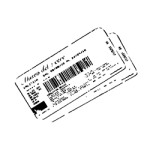
The Wax Museum is one of the novelties of the Village, as well as the unique collection of this kind in all of North Italy. It is currently in progress in Grazzano Visconti and always enriched with new characters.
Result of cooperation between some of the major Italian experts in special effects for film and costume designers of international renown, it guides visitors on a historical and cultural overview of the major personalities of Piacenza.
Among the most famous pieces surely:
- Hannibal: the Carthaginian leader who defeated the Romans at Trebbia, not far from the Village of Rivalta;
- Petrarch:
the poet who guest in the nearby town of Vigolzone inspired the famous “Tortelli con la Coda”; - Pope Paul III:
the father of the Council of Trent, the Duchy of Parma and Piacenza and Pierluigi Farnese; - Alexander Farnese: the leader represented in one of the two equestrian statues of Piazza Cavalli;
- Marie Luise of Austria: the “most loved Duchess by the people”, and also the wife of Napoleon Bonaparte;
- Giuseppe Verdi:the composer and patriot of Risorgimento, born and raised in Piacenza area;
- Reproduction of the “Etruscan Liver”: a curious manufactured, formerly used to predict the future;
- Reproduction of the “Chalice Gutturnium”: the find that gave its name to the most famous wine of Piacenza .
Events
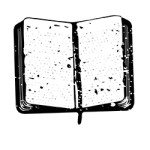
One of the nicest aspects of the Rivalta’s Village is surely to remain alive through a rich and stimulating program of events, manifestazioni and tourist initiatives.
For next Events: Rivalta’s Castle *
* For any information regarding the details, timetables, tariffs and the discounts applied, please refer to the official website of the castle or the mail number provided.
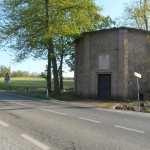
Oratorio della Madonna del Ponte, appena fuori le mura del Castello. La denominazione deriva senz'altro dalla vicinanza al ponte levatoio che permetteva l'ingresso entro la cerchia delle mura
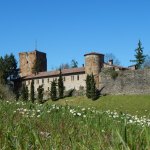
Il circuito murario del borgo fortificato parzialmente conservato ed interrotto da torri di diverse epoche, il dongione quadrato e la torre Sud di avvistamento
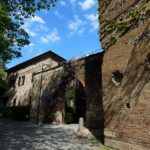
Arco ogivale d'Ingresso
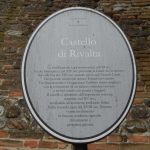
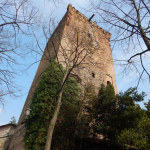
Il dongione è la torre più alta di un castello, punto di osservazione e rifugio, nel caso in cui il resto della fortificazione dovesse essere occupata dal nemico
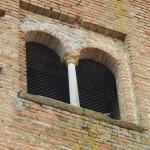
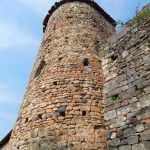
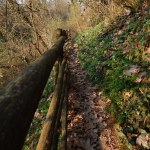
...scendendo un piccolo sentiero sulla sinistra, prima di varcare l'unica porta del Borgo...
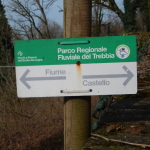
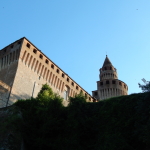
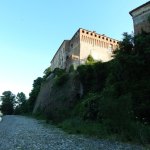
Terrapieno e terrazze della residenza signorile, torretta d'angolo sulla Trebbia
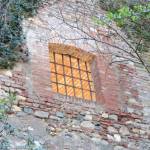
Finestra sull'esterno delle mura alla base della torretta
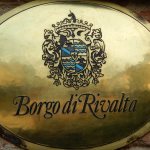
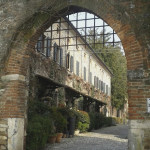
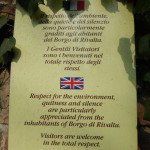
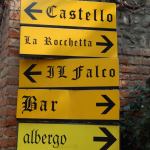
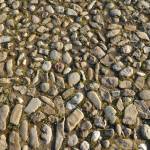
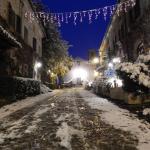
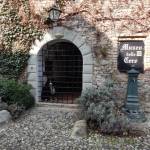
...c'è chi fa la guardia al Museo delle Cere, in allestimento temporaneo..
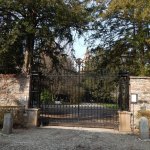
..Ingresso del Parco e della Residenza signorile..
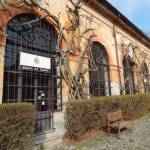
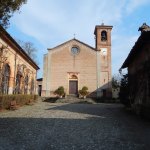
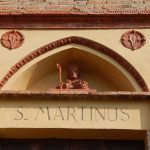
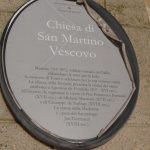
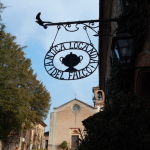
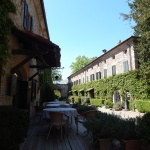
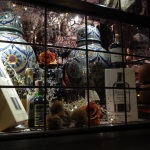
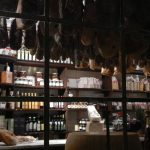
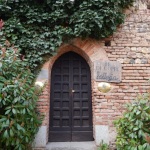
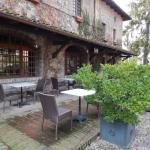
..il caratteristico Caffè di Rivalta
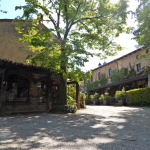
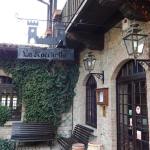
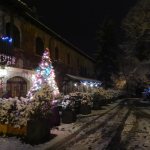
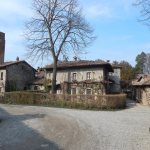
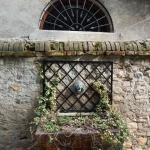
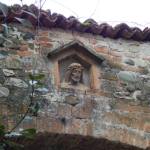
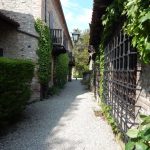
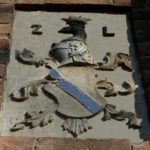
Particolare sopra una porta di ingresso. Stemma della Famiglia Zanardi Landi, attuali proprietari
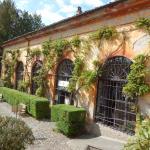
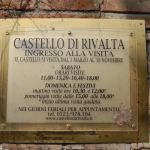
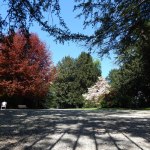
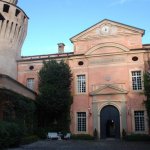
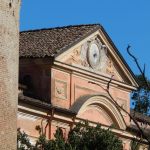
Il 'frontone' soprastante l'ingresso del Palazzo residenziale. Il Rinascimento ne riprese l’uso, come di altri elementi dell’architettura classica
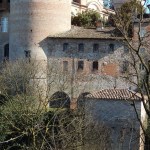
La caratteristica torre rotonda inserita nell'angolo occidentale del complesso di pianta quadrangolare
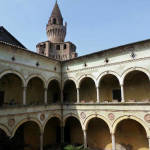
Lo smusso concavo della torre verso il cortile porticato
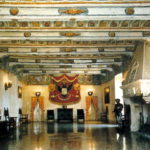
(piacenzamusei.it)
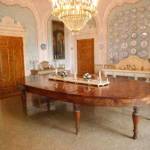
(italiaparchi.it)
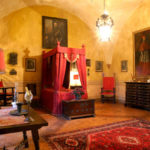
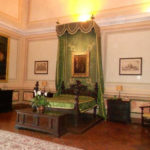
(piacenzamusei.it)
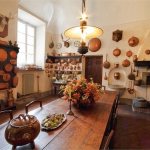
(italiaparchi.it)
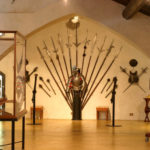
(piacenzamusei.it)
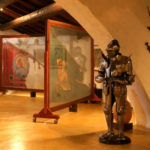
Bandiere della Battaglia di Lepanto, 1571 (piacenzamusei.it)
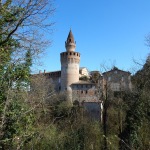
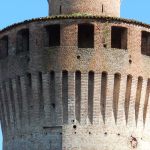
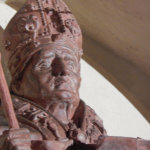
Sopra l'unica porta d'ingresso il busto in terracotta cinquecentesco, raffigurante il Santo..
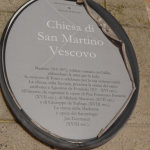
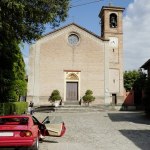
La chiesa separa l'area del castello da quella del borgo
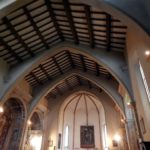
La navata interna con archi gotici e l'abside, che è a picco sul fiume
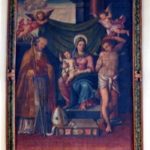
Al centro dell'abside la tela rappresentante la Madonna con i santi Martino e Sebastiano, di ignoto pittore emiliano (XVI-XVII secolo)
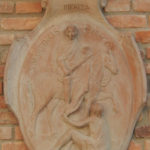
Sulla facciata della canonica la famosa scena del taglio del mantello raffigurata in un bassorilievo di terracotta

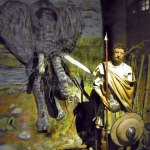
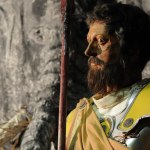
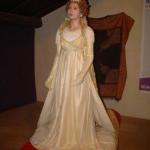
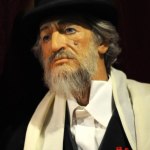
Map
By Car
From Highway A1(Milano/Napoli), exit PIACENZA SUD:
From Highway A21(Torino/Brescia), exit CASTEL SAN GIOVANNI:
By Bicycle
From Piacenza:
along the road Agazzana (S.P.28). Pass Vallera, Gossolengo villages and La Rossia location. Shortly after the right turn towards Rivalta / Gazzola / Agazzano. Cross the Tuna Bridge. In the bottom of the bridge turn left, pass the Avila disco (located on the right) and the Pizzeria Ghisona (located on the left).
1.7 km ahead, past the junction Piozzano / Gazzola / Agazzano, just left the goal.
From Travo:
along the Provincial Road 40 (S.P.40). Turn left taking the direction Statto / Croara / Rivalta. Switch Statto continue toward Croara. Arrived in Rivalta the medieval village is located immediately on the right.
From Gazzola:
along Via San Rocco towards Piacenza / Rivalta. Drive all the way through Location Balletta. Subsequently Location Rivalta. Intersection for Piacenza / Gragnano turn right towards Rivergaro. After 500 m you have come to the Medieval Village.
By Train
Theclosest railway stations are:
Piacenza Railway Station:
Castel San Giovanni Railway Station:
By Plane
Closest Airports are:
-
Orio al Serio Airport of Bergamo
-
Milano Linate Airport
-
Milano Malpensa Airport
-
Parma International Airport
-
Bologna Marconi Airport
Arrived in Airoport it is possible:
- Rent a car to move independently;
- Use the shuttle service at airports Bergamo, Milano Linate, Milano Malpensa and Bologna to go directly in the railway stations of the cities.
Duchy’s Castles
Portal of castles of duchy of Parma and PiacenzaRivalta’s Castle
Official site of Rivalta’s CastleRestaurant “La Rocchetta”
Famous restaurant in the villageAntica Locanda del Falco
Famous restaurant in the villageWax Museum
Reproductions of famous characters from Piacenza
